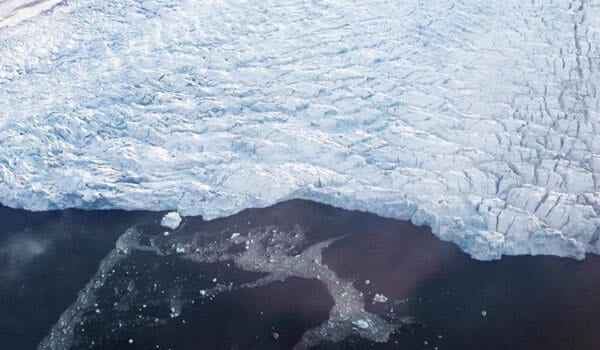Between 31 July and 21 August 2017, after a period of warm and sunny weather, open fires started burning in Western Greenland. The fires burned on peat lands that had become vulnerable to fires by permafrost thawing, and led to black carbon from the fires depositing on the Greenland Ice Sheet.

– These fires and the black carbon (BC, or soot) emitted raised public concerns about the effects on ice melting in the area, says Nikolaos Evangeliou, scientist at NILU – Norwegian Institute for Air Research.
– So, we set out to find to what degree these fires had contributed to albedo changes on the Greenland Ice Sheet.
Seven tons of black carbon
The scientist team from NILU in Norway, National University of Life and Environmental Sciences of Ukraine and King’s College London in the UK used several satellite data sets to estimate that the total peat area burned was about 2345 hectares. Using a transport model to simulate how black carbon traveled through the atmosphere and got deposited, they found that the smoke plumes were often pushed towards the Greenland Ice Sheet by westerly winds. Thus, a large fraction of the black carbon emissions – seven tons or about 30% – was deposited on snow or ice covered surfaces.
– It may sound dramatic, but the calculated black carbon deposition is small compared to BC deposition from global sources. Still, it was not entirely negligible, says senior scientist Andreas Stohl from NILU, presenting their work at the General Assembly of the European Geosciences Union in Vienna on April 11th this year.

In Greenland, the only way to provide substantial amounts of fuel for open fires is permafrost degradation. Earlier studies have suggested that significant permafrost loss in Greenland may occur only by the end of the 21st century.
– These fires might thus indicate that significant permafrost degradation has occurred sooner than we expected, Stohl says.
Minimal change of albedo
Analysis of aerosol optical depth data from three sites in Western Greenland in August 2017 showed strong influence of forest fire plumes from Canada, but little impact of the Greenland fires. Nevertheless, CALIOP lidar data showed that the model used in the study very effectively captured the presence and structure of the plume from the Greenland fires.
The albedo changes and instantaneous surface radiative forcing in Greenland due to the black carbon emissions from the fire were estimated with the SNICAR model and the uvspec model from the libRadtran radiative transfer software package.
– We estimate that the maximum albedo change due to the black carbon deposition was about 0.006, Evangeliou explains. – In other words, it was too small to be measured by satellites or other available means, and of course impossible to see with the naked eye.
Fire causing warming causing fires…
When talking about global warming and climate change, scientists often mention radiative forcing.
– In very simple terms, radiative forcing is the difference between the amount of solar heat that hits the Earth and the amount of heat the Earth reflects back into space, compared to pre-industrial conditions. Radiative forcing is often used to measure the effect a natural or man-made factor has on the climate, explains Stohl.
The average instantaneous surface radiative forcing over Greenland at noon on 31 August was 0.03 Watt/m2, with locally occurring maximum values of 0.63 Watt/m2. The average value is at least an order of magnitude smaller than the radiative forcing due to black carbon from other sources. Overall, the fires burning in Greenland in summer of 2017 had little impact on black carbon deposition on the Greenland Ice Sheet, mainly due to the – in a global context – still rather small size of the fires.
However, the very large fraction of the black carbon emissions deposited on the Greenland Ice Sheet makes these fires very efficient climate forcers on a per unit emission basis. If the expected further warming of Greenland causes larger fires in the future, this could indeed cause substantial albedo changes, which in turn would cause accelerated melting of the Greenland Ice Sheet. The fires burning in 2017 may be a harbinger of such future changes. – These fires are like the miner’s canary, concludes Stohl, – warning us of more substantial permafrost melting, larger fires and a potentially vicious feedback loop for the Greenland ice sheet.




